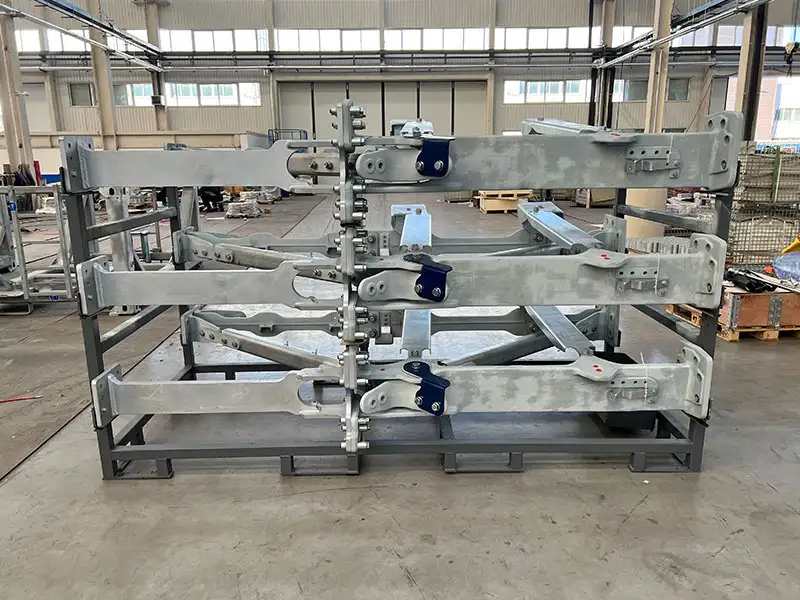Windproof Metal Structures: The Future of Sustainable Building Materials
Release time:
2025-10-19
Summary
Windproof Metal Structures: The Future of Sustainable Building Materials
Introduction to Windproof Metal Structures
In the realm of architecture and construction, the demand for sustainable building materials is constantly evolving. Among the most promising innovations are **windproof metal structures**, which not only offer enhanced durability but also contribute to energy efficiency and environmental sustainability. These structures are designed to withstand extreme weather conditions while reducing the carbon footprint associated with traditional building materials.
The Importance of Windproof Design
Windproof design is critical in today’s climate, where extreme weather events are becoming more frequent. Buildings that can effectively resist high winds are essential for ensuring safety and longevity. Windproof metal structures are engineered with advanced technology that allows them to endure severe gusts, making them ideal for areas prone to hurricanes, tornadoes, and other high-wind scenarios.

Key Features of Windproof Metal Structures
Windproof metal structures possess several key features that set them apart from conventional building materials. These features include:
1. Enhanced Structural Integrity
The use of high-strength steel and innovative design techniques ensures that windproof metal structures maintain their integrity even under extreme pressure. This enhanced structural integrity reduces the risk of catastrophic failure during high-wind events.
2. Lightweight yet Robust
Despite their strength, windproof metal structures are relatively lightweight compared to traditional materials like concrete or masonry. This weight advantage allows for easier transportation and installation without compromising strength.
3. Energy Efficiency
Windproof metal structures contribute to energy efficiency through superior insulation properties. When integrated with modern insulation systems, these structures can minimize heating and cooling costs, making them a sustainable choice for eco-conscious builders.
4. Low Maintenance Requirements
Metal structures are inherently resistant to corrosion and decay, leading to lower maintenance costs over time. This longevity not only reduces the need for repairs but also contributes to lower environmental impact by decreasing the frequency of material replacement.
The Role of Windproof Metal Structures in Sustainable Building
Sustainable building practices aim to minimize environmental impact while maximizing efficiency. Windproof metal structures align perfectly with these goals, providing a viable solution for modern architecture.
Reducing Carbon Footprint
The production of metal is often associated with high energy consumption; however, advancements in recycling and production technologies have significantly reduced the carbon footprint of metal materials. By utilizing recycled steel in construction, builders can further minimize their environmental impact.
Resource Efficiency
Metal structures can be prefabricated off-site, reducing waste and resource consumption during the construction process. This efficiency not only speeds up project timelines but also contributes to sustainable building practices.
Integration with Renewable Energy Solutions
Many windproof metal structures are designed to accommodate renewable energy technologies such as solar panels and wind turbines. This integration allows buildings to generate their own energy, further enhancing their sustainability.
Case Studies: Successful Applications of Windproof Metal Structures
Several notable projects have successfully employed windproof metal structures, showcasing their potential and versatility.
1. Hurricane-Resistant Commercial Buildings
In hurricane-prone regions, commercial buildings constructed with windproof metal have demonstrated their ability to withstand extreme weather conditions. These structures not only survive the storms but also provide a safe environment for occupants and protect valuable investments.
2. Eco-Friendly Residential Homes
Innovative architects are designing residential homes that utilize windproof metal frames combined with sustainable materials. These homes offer energy efficiency and resilience without sacrificing aesthetic appeal.
3. Industrial Facilities
Many industrial facilities are opting for windproof metal structures to safeguard equipment and ensure operational continuity during inclement weather. These buildings can withstand high winds while providing a secure environment for machinery and inventory.
The Future of Windproof Metal Structures in Architecture
As technology continues to advance, the future of windproof metal structures looks promising. Innovations in material science and engineering will lead to even more resilient designs and applications.
Emerging Trends in Metal Construction
To stay ahead in the industry, architects and builders are exploring emerging trends such as:
1. Smart Building Technologies
Integrating smart building technologies with windproof metal structures can optimize energy use and enhance overall building performance. These technologies enable real-time monitoring of structural integrity and energy consumption, providing valuable data for building management.
2. Customizable Designs
Advances in manufacturing processes allow for greater customization of metal structures. This flexibility enables architects to create unique designs tailored to specific project requirements while maintaining the windproof characteristics of the materials.
3. Collaboration with Sustainable Practices
The collaboration between metal construction and sustainable practices is becoming more pronounced. Builders are increasingly looking for ways to combine windproof structures with sustainable technologies, such as green roofs and rainwater harvesting systems.
Challenges and Considerations in Implementing Windproof Metal Structures
While the benefits of windproof metal structures are clear, there are challenges and considerations to keep in mind.
1. Initial Costs
The upfront costs associated with windproof metal structures may be higher than traditional building materials. However, long-term savings on maintenance and energy efficiency often offset these initial expenses.
2. Skilled Labor Requirements
The installation of windproof metal structures requires a skilled workforce familiar with advanced construction techniques. Investing in training and development can help overcome this challenge.
3. Building Codes and Regulations
Adhering to local building codes and regulations is crucial when implementing windproof metal structures. Builders must ensure their designs meet safety standards while also aligning with sustainable building practices.
FAQs About Windproof Metal Structures
1. What are windproof metal structures?
Windproof metal structures are buildings designed using high-strength metal materials that can withstand extreme wind conditions, ensuring safety and durability.
2. How do windproof metal structures contribute to sustainability?
These structures reduce energy consumption through efficient insulation, utilize recycled materials, and can integrate renewable energy solutions, all contributing to a lower carbon footprint.
3. Are windproof metal structures cost-effective?
While initial costs may be higher, the long-term savings on maintenance, energy efficiency, and durability make windproof metal structures a cost-effective choice overall.
4. Can windproof metal structures be used in residential buildings?
Yes, many architects are successfully integrating windproof metal structures into residential designs, offering both safety and aesthetic appeal.
5. What role do building codes play in windproof metal structures?
Building codes dictate the safety requirements and specifications for windproof metal structures, ensuring that they meet necessary standards for durability and performance.
Conclusion
As we look toward the future, **windproof metal structures** are poised to play a pivotal role in sustainable building practices. Their unique combination of strength, energy efficiency, and low maintenance makes them an attractive choice for architects and builders alike. By embracing innovative designs and technologies, we can create resilient structures that not only protect occupants but also contribute to a more sustainable future. Investing in windproof metal structures is not merely a trend; it is a commitment to building a safer and more sustainable world.
More News


